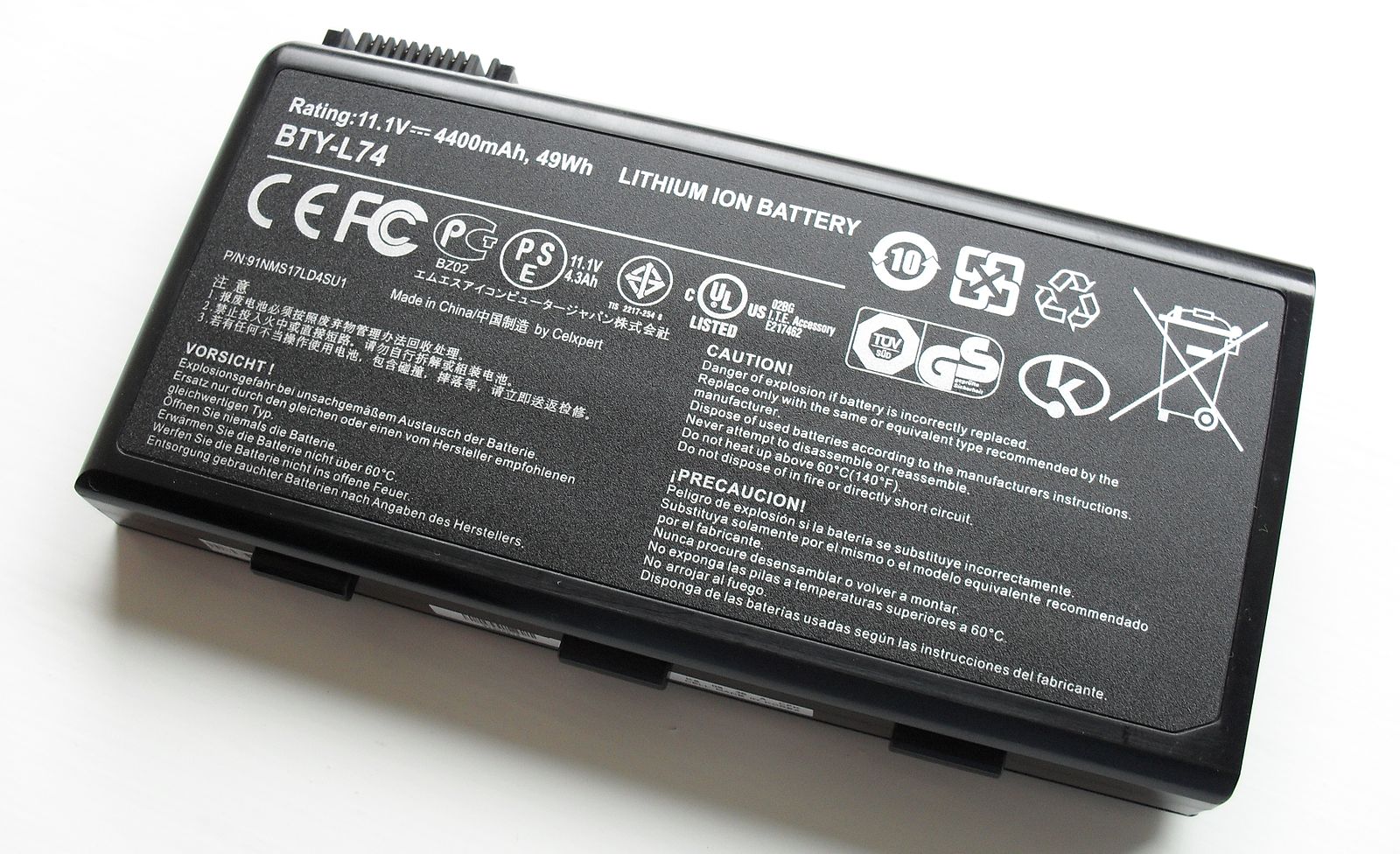Difference Between Lithium and Lithium Ion
It’s just 200 years since the invention of the first true battery by the Italian physicist Alessandro Volta in 1800. He created the first battery by stacking alternating layers of zinc and silver, with each pair of dissimilar metals separated from the next by a piece of cloth which was saturated with brine. The battery was the first galvanic or primary battery and came to be known as the “Volta’s pile”. Batteries have come a long way since then. The last decade has seen some major and significant advances in the battery technology and science. New secondary batteries have been developed and commercialized, notably the lithium-ion battery.
Although most small consumer batteries are still of the primary type, there is a growing trend to adopt the more economical and efficient rechargeable batteries. The science and technology of lithium batteries have dominated the field of advanced power sources for quite some time. But the modern lithium-ion cells are used widely and has many range of performance requirements that are driven by the requirements of the users. The lithium-ion cells are usually classified either as high energy or high power, although the intermediate variants exist. Well, the primary difference between the two is that lithium cells are a primary cell whereas lithium-ion cells are secondary cells.
What is Lithium Cell?
Lithium cell is a primary cell known for its high energy density and low weight. Lithium batteries are commonly used in consumer electronic devices. Lithium based batteries are by far the most important storage systems available on the market. Lithium has two unique properties which make it highly suitable as a negative electrode for batteries. First, lithium is the lightest of all the metals in the periodic table, with an atomic mass of only 6.94. Second, it has the greatest electrochemical reduction potential and provides the largest energy density per weight. The conjunction of the two properties results in a battery of high specific energy. However, the lithium primary batteries are not safely and easily rechargeable, which eventually led to the invention of lithium-ion secondary cells.
What is Lithium-Ion Cell?
Lithium-ion cells are the most common energy sources for today’s portable electronics such as smartphones, laptops, cameras, etc. Lithium-ion secondary cells are the most favorable energy storage devices because of their high power and high energy densities which makes them perfect for applications in portable consumer electronics, telecommunications devices and automotive industry such as hybrid electric vehicles (HEV). Lithium-ion cells rely on reversible insertion of Lithium ions into the structures of cathode and anode active materials. Lithium-ion batteries first appeared in the 1990s. Although the work with lithium batteries began in 1912, it wasn’t until the early 1970’s that the first commercial non-rechargeable lithium cells became available. The first commercial lithium-ion (Li-ion) battery appeared in 1991. Since then the demand for Lithium-ion batteries increased exponentially.
Difference between Lithium and Lithium Ion
Basics
– Lithium cell is a primary cell known for its high energy density and low weight, and which has metallic lithium as an anode. Lithium batteries are also referred to as lithium-metal batteries. However, the lithium primary batteries are not safely and easily rechargeable, which eventually led to the invention of lithium-ion secondary cells. Lithium-ion cells are secondary cells which rely on reversible insertion of Lithium ions into the structures of cathode and anode active materials. These are the most favorable energy storage devices because of their high power and high energy densities.
Cost
The outlay for rechargeable lithium-ion secondary batteries is greater than that for lithium primary batteries, and there is also a need for a charger. Nevertheless, the extra costs are offset after a few recharges, and thereafter the use of rechargeable batteries is more viable and efficient on the long run. However, the frequency of use is a key factor in deciding whether to go for a primary lithium cell or a secondary lithium-ion cell.
Convenience
– Some people find it difficult to have to remember to recharge batteries. Also, lithium-ion secondary batteries have an abrupt end point of recharge meaning you will never exactly know when the battery will discharge. On the other hand, the voltage decline of primary lithium cells is gradual and you will have a slight idea when your battery is about to be discharged and there is an adequate warning that it is time for replacement. So, in terms of convenience, both the batteries have their fair share of pros and cons.
Applications
– Lithium-ion secondary cells are the most favorable energy storage devices because of their high power and high energy densities which makes them perfect for applications in portable consumer electronics, telecommunications devices and automotive industry such as hybrid electric vehicles (HEV). Due to their high density and power capabilities, they are also used for some high-end applications such as military needs on the land, in the air, on and under the water.
Lithium vs. Lithium Ion: Comparison Chart
Summary of Lithium vs. Lithium Ion
Although most small consumer batteries are still of the primary type, there is a growing trend to adopt the more economical and efficient rechargeable batteries. Lithium based batteries are by far the most important storage systems available on the market. But primary cells are not safely and easily rechargeable. This is where secondary lithium-ion cells come to the picture. Lithium-ion secondary cells are the most favorable energy storage devices because of their high power and high energy densities.
- Difference Between Caucus and Primary - June 18, 2024
- Difference Between PPO and POS - May 30, 2024
- Difference Between RFID and NFC - May 28, 2024
Search DifferenceBetween.net :
Leave a Response
References :
[0]Smart, M.C. Rechargeable Lithium and Lithium Ion Batteries, Issue 29. Pennington, New Jersey: The Electrochemical Society, 2008. Print
[1]Gulbinska, Malgorzata K. Lithium-ion Battery Materials and Engineering: Current Topics and Problems from the Manufacturing Perspective. Berlin, Germany: Springer, 2014. Print
[2]Dell, R.M. and D.A.J. Rand. Understanding Batteries. United Kingdom: Royal Society of Chemistry: 2007. Print
[3]Franco, Alejandro. Rechargeable Lithium Batteries: From Fundamentals to Applications. Amsterdam, Netherlands: Elsevier, 2015. Print
[4]Image credit: https://www.publicdomainpictures.net/en/view-image.php?image=190573&picture=button-cell-batteries
[5]Image credit: https://commons.wikimedia.org/wiki/File:Li_ion_laptop_battery.jpg



